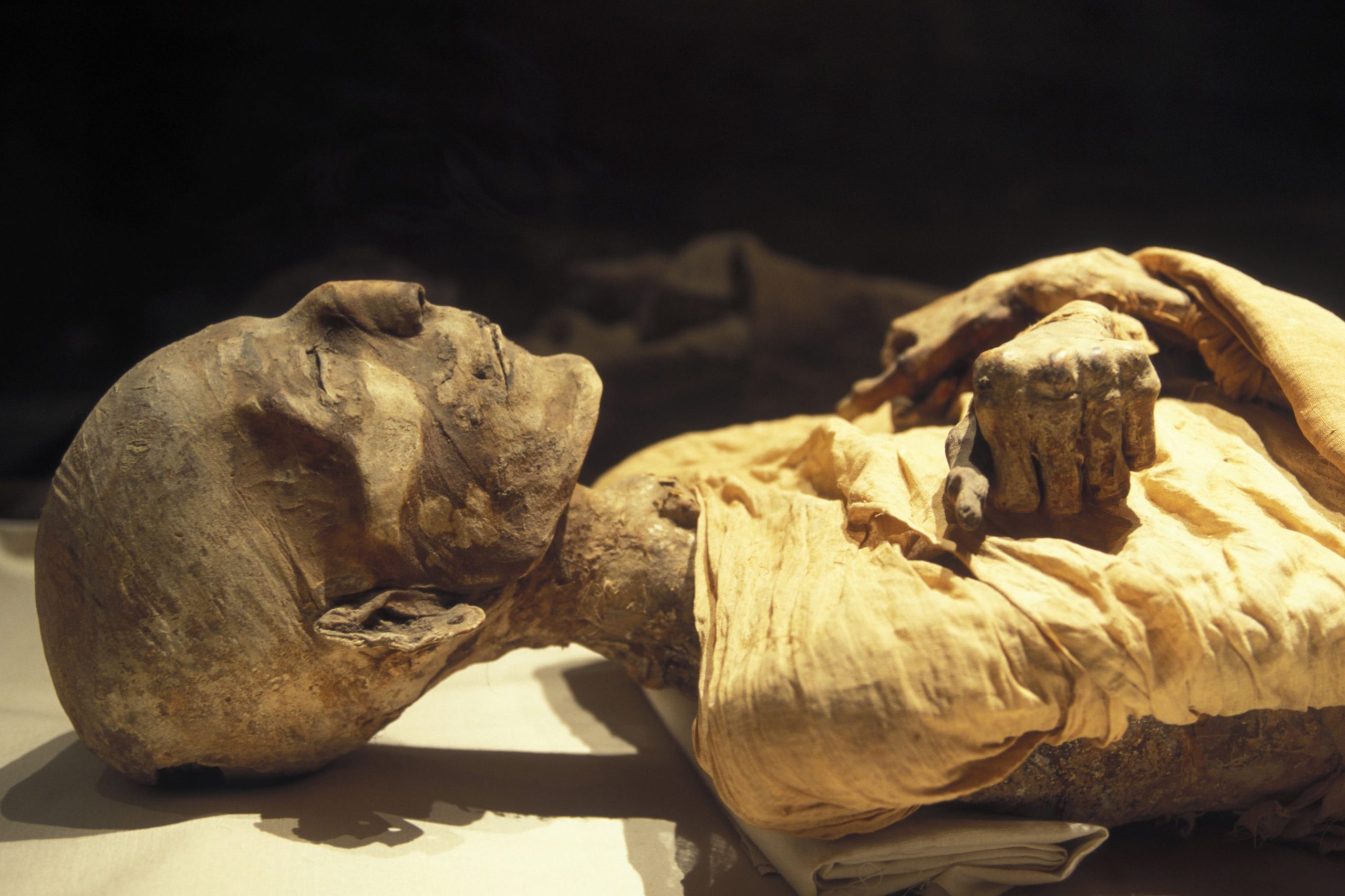There are six sealed coffins excavated from ancient Egyptian tombs. Because these six coffins were sealed, no one knew what was buried inside them for thousands of years. No one opened these coffins.
Now, using the latest technology, scientists have been able to figure out what was buried inside these coffins without opening them.
After these six coffins were excavated from the original graves, they were moved to the British Museum in London and stored.
The size of these coffins is small. The smallest coffin is only 2 inches long, and the longest is 12 inches. These coffins were buried between 664 BC and 250 BC. (Between 2500 and over 2200 years ago.)
These coffins were excavated in 1885 from the ancient cities of Naukratis and Tell el-Yehudiyeh. All of these coffins are made of bronze alloy, and on top of the coffins are salamanders. There are carvings of eels and cobras.
On top of one of the coffins is carved a picture of a human head, a cross between an eel and a moose, and a crown is still placed on the head of this creature. Scholars believe it represents the ancient Egyptian god Atum.
Scholars have found that the carvings on these coffins are clues to the objects buried inside. Their findings were published in the April 20 issue of the research journal Scientific Reports.

Coffins are made of metal and cannot be X-rayed. So scientists used a technique called neutron tomography. This way, you don’t have to open the coffin and have the ability to see through the metal.
Inside one of the coffins, a North African lizard’s head was cut off and buried. In the other two coffins, fragments of unidentified animal bones were wrapped in cloth.
The practice of burying animals was popular in ancient Egypt. But burials with this type of sealed coffin are quite rare, explained Daniel O’Flynn, who led the research team.
In addition to animal bones, three other coffins were found to have pre-melted lead. This lead is used to close the hole in the coffin, or It is considered that it was added to carry the weight.
The outside of the coffins is still tied with hangers. It is believed that these ropes were used to carry coffins or hang them from the roof of the church.
“It was interesting to find the lead in the coffin,” O’Fland said. “A lot of lead was found inside the three coffins. I don’t know why lead is added. It may have been added for a practical purpose. But some scholars believe that it may have been added as a magical ingredient. “According to previous research, we learned that lead was used as a shield to protect mummy fossils, and it was also used as a curse,” he continued to explain.
Scholars cannot answer whether these animals were buried as sacrifices or not. Flynn explains his opinion that these animals may have been sacrifices or offerings to the gods.



